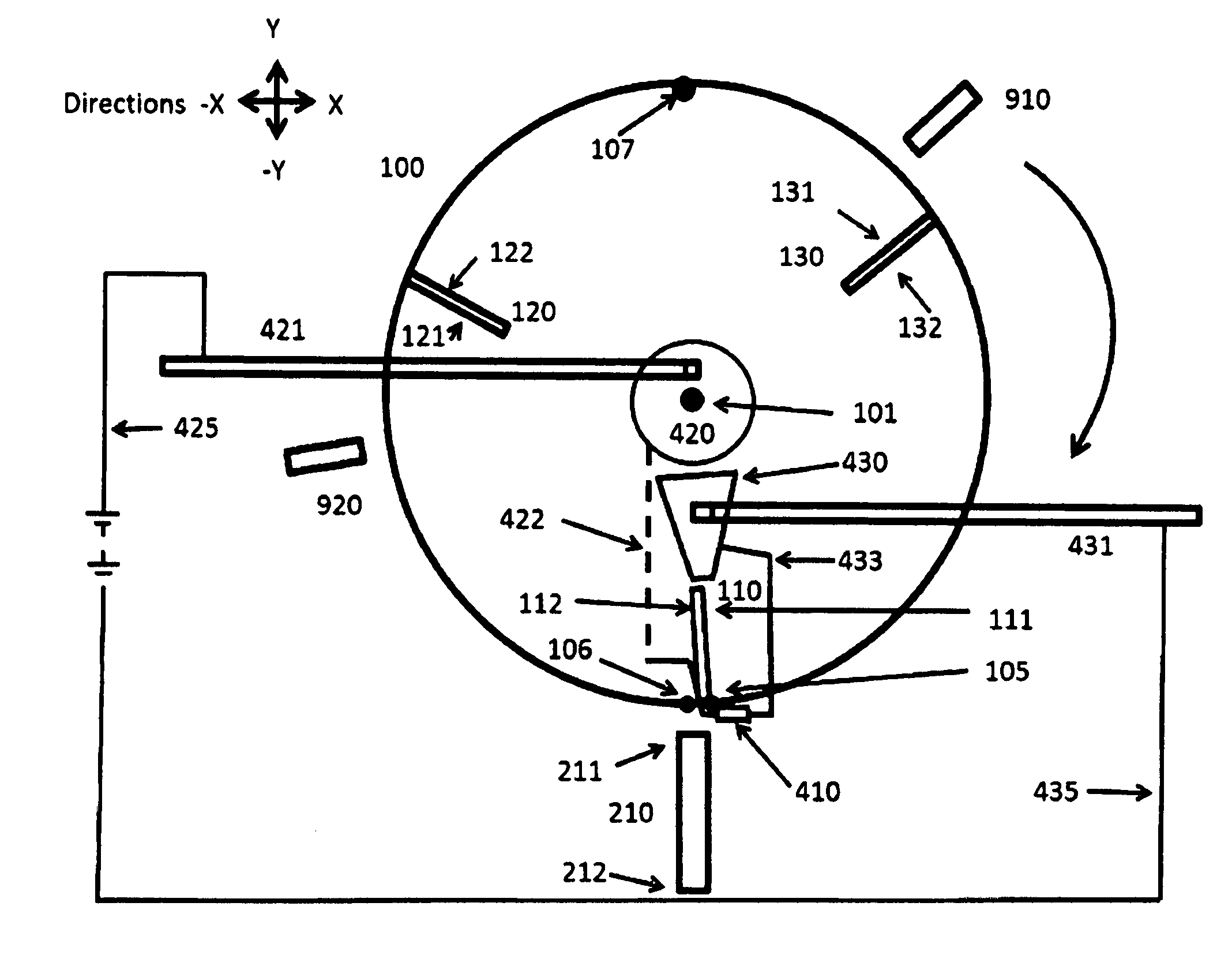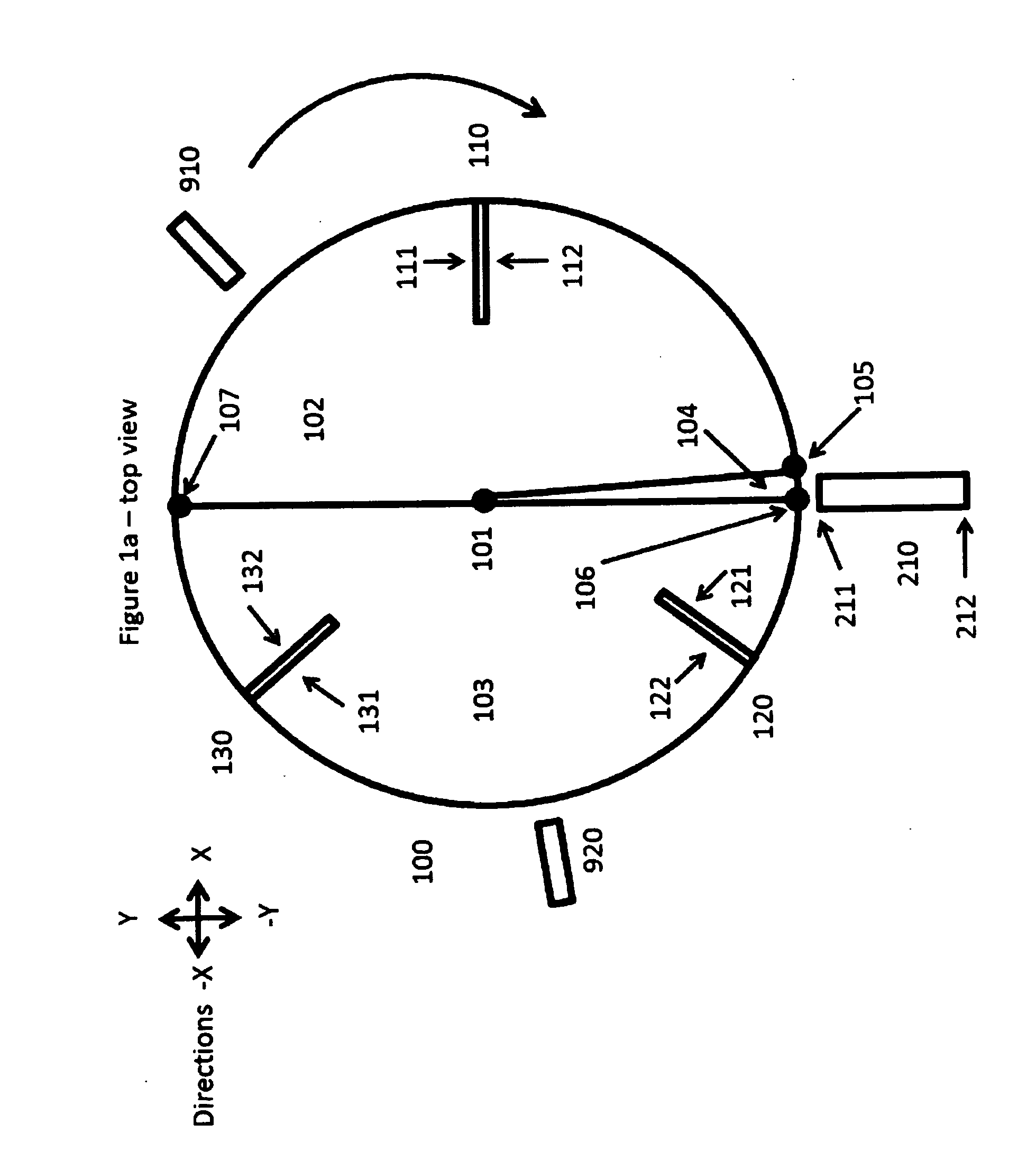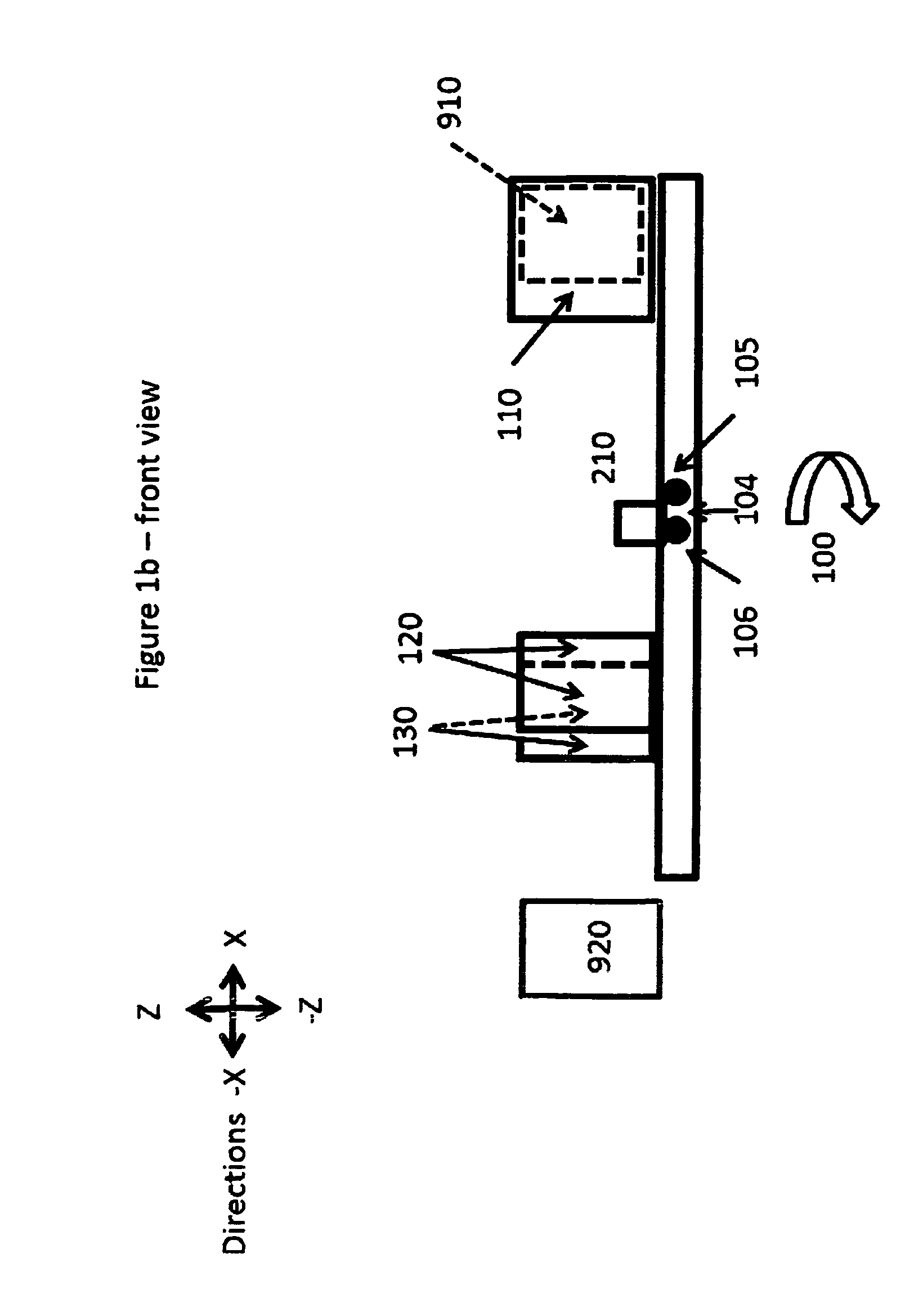Method and apparatus for generating electrical and mechanical energy
a technology of electrical and mechanical energy and methods, applied in the direction of motor/generator/converter stopper, dynamo-electric converter control, shape/form/construction, etc., can solve the problems of no mechanism for controlling objects, energy loss, friction and other inefficiencies in the system, and achieve the effect of increasing enhancing the efficiency of mechanical embodiments
- Summary
- Abstract
- Description
- Claims
- Application Information
AI Technical Summary
Benefits of technology
Problems solved by technology
Method used
Image
Examples
Embodiment Construction
[0155]The invention is powered by the attraction and repulsion of permanent magnets.
[0156]In FIG. 1a, the driven magnet 110 is in the attraction zone, and the driven magnets 120 and 130 are in the repulsion zone. All driven magnets are in the propulsion zone.
[0157]Referring to driver magnet 210 and driven magnet 110, the forces between the magnets are as follows:[0158]Attraction between the north pole 211 of the driver magnet 210 and the south pole 112 of the driven magnet 110.[0159]Repulsion between the north pole 211 of the driver magnet 210 and the north pole 111 of the driven magnet 110.[0160]Attraction between the south pole 212 of the driver magnet 210 and the north pole 111 of the driven magnet 210.[0161]Repulsion between the south pole 212 of the driver magnet 210 and the south pole 112 of the driven magnet 110.
[0162]The attraction and repulsion involving the south pole 212 of the driver magnet 210 are extremely small, because the south pole 212 is far from the driven magnet...
PUM
 Login to View More
Login to View More Abstract
Description
Claims
Application Information
 Login to View More
Login to View More - R&D
- Intellectual Property
- Life Sciences
- Materials
- Tech Scout
- Unparalleled Data Quality
- Higher Quality Content
- 60% Fewer Hallucinations
Browse by: Latest US Patents, China's latest patents, Technical Efficacy Thesaurus, Application Domain, Technology Topic, Popular Technical Reports.
© 2025 PatSnap. All rights reserved.Legal|Privacy policy|Modern Slavery Act Transparency Statement|Sitemap|About US| Contact US: help@patsnap.com



